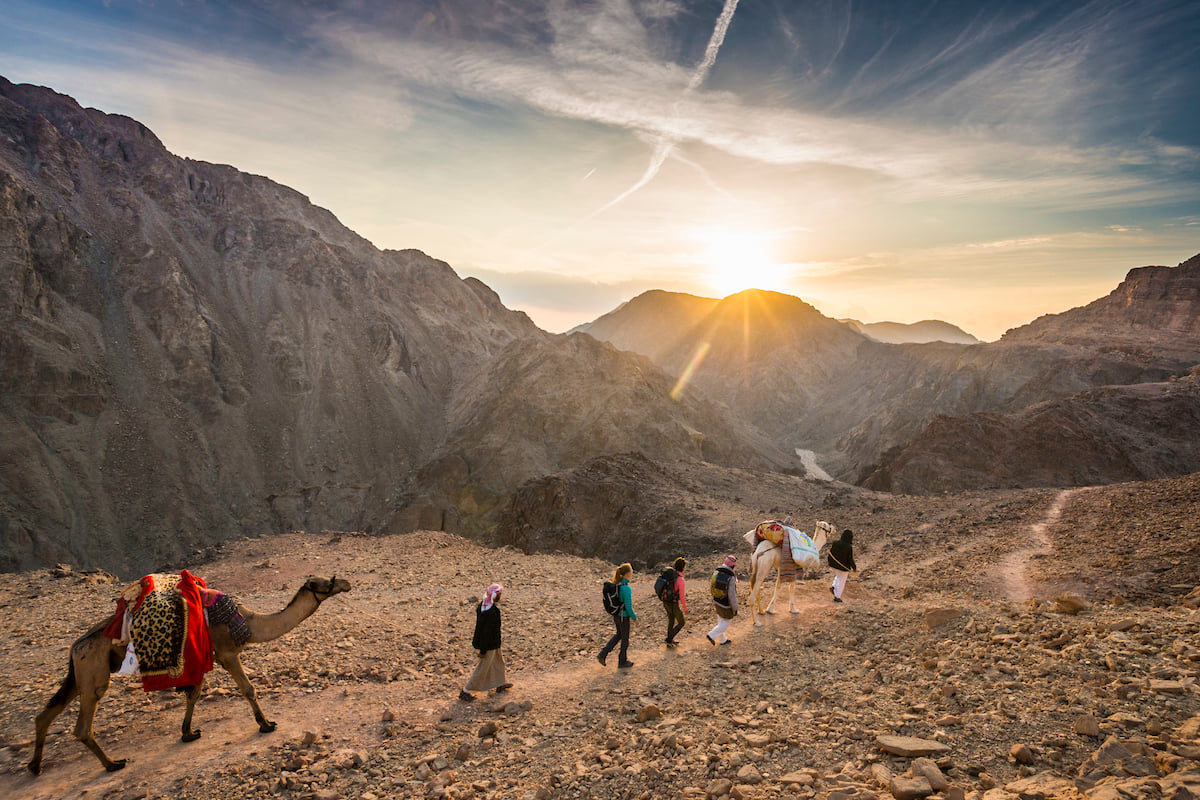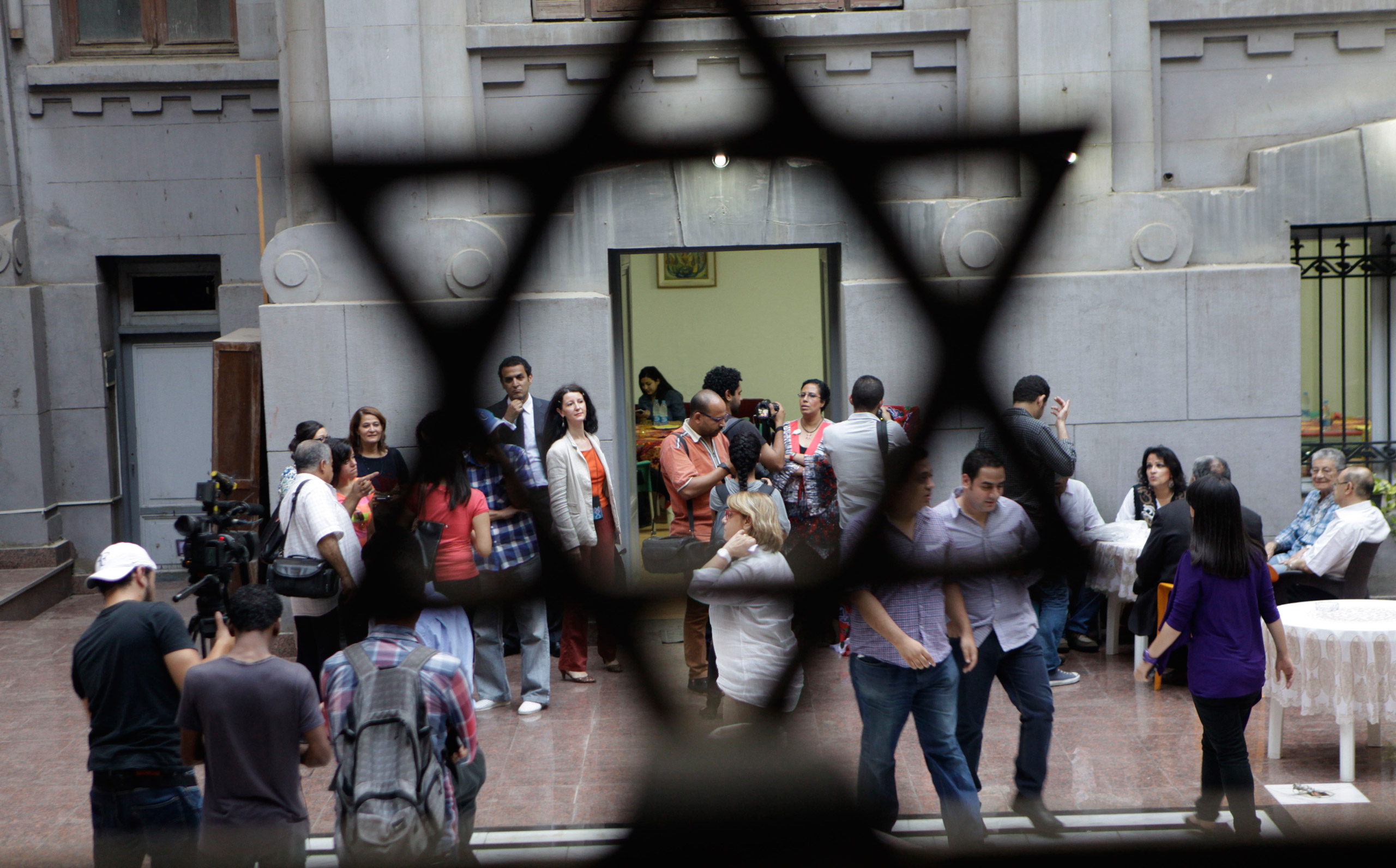Egypt’s spiritual soul runs like an underground river. Beyond the bustling of its cities, and its packed streets, there is a strong life force that holds different communities together through difficult times.
While religious tourism is often associated with places like India, according to the Global Spirituality Index, there is also potential for Egypt to become a key destination for spiritual travelers. More than just being a center for major religious civilizations, such as the Coptic Civilization and the Islamic civilization, Egypt also holds a long history of ancient spiritual practices and beliefs that are unique to its geographical landscape and natural environment.
For instance, the study and exploration of the relationship between heaven and earth was always embedded in the culture of ancient Egyptians. Egyptologist Regine Schulz noted that the ancient Egyptians once believed that Gods traversed the skies of heaven in boats, which reflects ancient Egyptians’ reliance on the Nile river and their deep connection with it.
The sun also dominates Egypt’s landscape and environment, which is why it was also regarded as an important spiritual symbol that reflected the journey of life from birth to death. Desert spirituality in ancient Nubia and Upper Egypt is also recorded to have influenced spiritual practices in the desert by Christian monks as well as modern wellness gurus.
While there isn’t much known about the influence of Egypt’s ancient spiritual practices on our world today, glimpses of the many historical texts and religious sites can reveal a sea of inexhaustible spiritual knowledge waiting to be discovered.
As Egypt has always been a hub for various religious sites and activities, Minister of Tourism and Antiquities Khaled El-Anany noted in an interview that he feels optimistic about the potential of religious tourism in Egypt this year. Among other projects, Egypt is set to announce the completion of the revival of the Holy Family’s route in Egypt. In 2021, three restoration projects of the route believed to have been taken by the Holy Family through Egypt were completed in Samanoud, Gharbeya, Sakha, Kafr El-Sheikh, and Tal Basta, Sharqeya. A number of restoration projects were also carried out at Christian monuments and Jewish Synagogues, such as the Ben Ezra Synagogue.
Religious and Spiritual Travel Around the World
Religious travel has been growing steadily over the years, according to the United Nations’ World Tourism Organization (UNWTO), with the most famous destination being India, which has allowed thousands of tourists to discover diverse expressions of spirituality and faith. Religious tourism holds the potential to create employment opportunities for local communities, while at the same time also promoting religious tolerance. This, however, falls under the condition that the local traditions and cultural heritage of such destinations are respected.
In times of upheaval, spiritual journeys can provide moments of peace, calm and reflection. Spiritual tourism spans many different activities and holds no strict definition; it can include spiritual festivals, events, visits to sacred sites, wellness and spa tourism, and meditation.
A number of researches in the UNWTO report have also pointed out that religious and spiritual tourism cannot take place without the contribution of local communities, as cultural values and natural landscapes are usually attached to local communities who protect, preserve, and promote these values and landscapes. Religious and spiritual tourism has also enabled communities to change their awareness of ecosystems and the environment, as well shift labor structures from merely agricultural to touristic.
Tapping on modern spirituality as well as ancient pilgrimage sites, Egyptian Streets compiled a list of key places that offer a glimpse of Egypt’s growing potential in becoming a top spiritual and religious travel destination.
Desert Spirituality in Siwa and Sinai

Desert spirituality has gained wide popularity among modern wellness and spiritual movements, which involves meditating and yoga in the desert. For any yogi or meditation enthusiast, Egypt’s desert landscapes can easily be listed among the most spiritual places in the world, and has a history of being a famous spot for meditation for ancient monks.
The mesmerizing salt lakes in the Siwa Oasis in the northwest of Egypt are believed to offer deep healing and relaxing benefits for many travelers. There are also pristine sand dunes near the oasis that can be a great place for silent meditation and yoga retreats.
In the Sinai peninsula in the east of Egypt, there are several breathtaking mountain views for spiritual travelers, from Saint Catherine, Jebel Al Ahmar, and Um Hadabat. The Red Sea Mountain Trail was ranked as one of the world’s 52 best places to visit in 2022 by The New York Times.
The Great Transfiguration Project in St. Catherine

Located in South Sinai, the celestial beauty of Saint Catherine is unmatched, and is famous for being the site of Saint Catherine’s Monastery and the pristine Mount Sinai, which dominates its landscape.
Egypt announced plans to uncover the Great Transfiguration Project in St. Catherine’ this year, which focuses on developing the Monastery of Saint Catherine, a UNESCO World Heritage site. The project is set to establish a spiritual shrine in the mountains surrounding the Holy Valley, and will link the city to the extended coastal area between towns of El-Tor, Sharm El-Sheikh, and Dahab.
The monastery’s library, which holds the largest collection of ancient religious manuscripts in the world, is also currently being restored. This is happening parallel to the restoration work on churches inside the monastery, such as the churches of Saint John and Saint Stephen. The project is also set to improve the urban environment of the city by establishing bicycle and pedestrian lanes, as well as supporting plans to plant vegetation such as olive trees.
Deir Al-Maymun Village
Deir al-Maymun is one of the few almost entirely Christian villages in the country. It is said that the village was founded by Saint Anthony the Great, who isolated himself following his parents’ death, gave away all his wealth, and started hiking east until he reached a small cave higher up on the Galala Qeblia Mountain near the Deir al-Maymun Village in Beni Suef.
Searching for spiritual renewal, away from the hectic life of populous cities, he decided to adopt a Pharaonic temple as his place of isolation. That temple later became the Saint Anthony monastery.
The Deir al-Maymun village is surrounded by lush palm trees and spectacular mountain views, offering tourists an opportunity not only to dive deep into the spiritual energies of the place, but also to interact with the community and understand their religious and cultural values.
Renovation of Jewish Synagogues

Egypt is also currently carrying out a renovation project of the Ben Ezra Synagogue, which is considered the oldest synagogue in Egypt. The temple is known to hold a collection of historical documents known as the Cairo Geniza, which outline the history and transactions of Cairo’s Jewish community from the 11th century until the 19th century.
In 2020, Egypt also reopened the Eliahu Hanavi synagogue in Alexandria following its restoration. This synagogue is included on the World Monuments Fund’s 2018 list of monuments at risk, described on the website as “a symbol of Egypt’s historical plurality, when diverse national and religious communities lived and worked together in a spirit of conviviality and religious freedom.”






Comments (0)